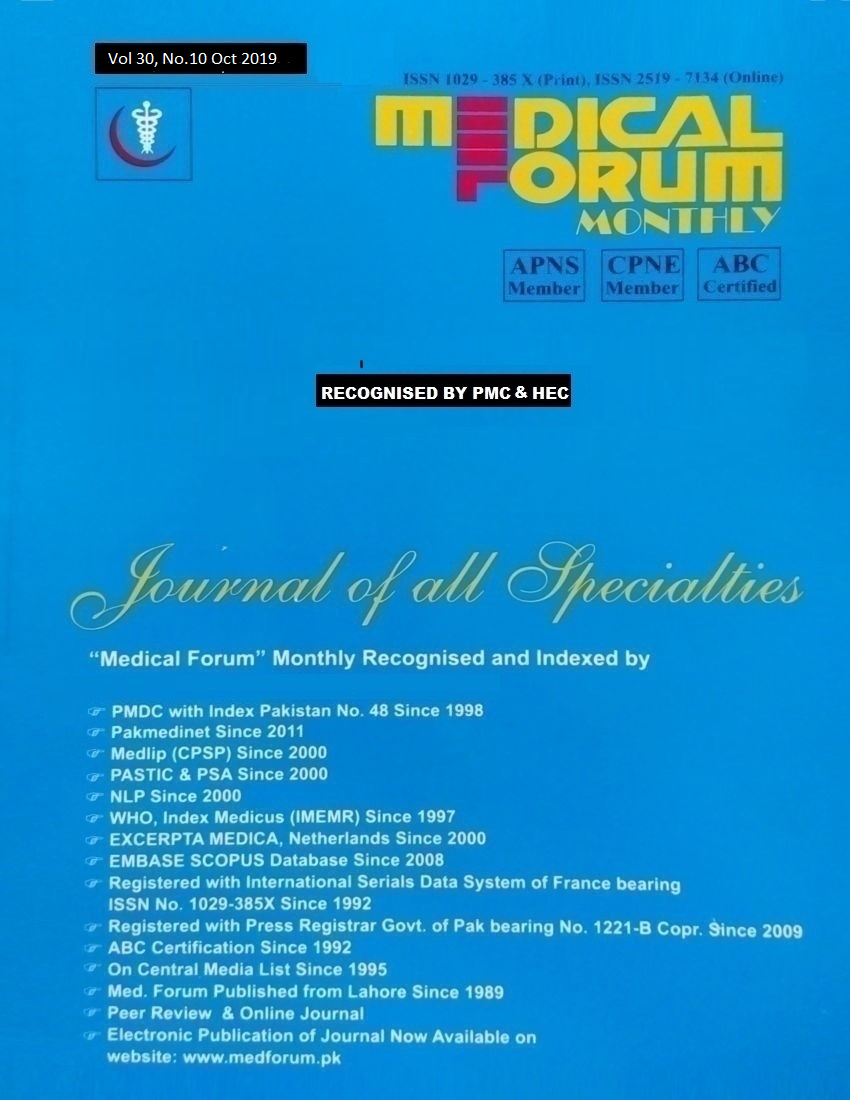
2. Frequency of Atypical Pediatric Celiac Disease Manifestations of Pediatric Celiac Disease
Muhammad Arshad1, Ahmad Hassan2 and Osama Anwaar3
ABSTRACT
Objective: To determine Frequency of Atypical Manifestations of Celiac Disease in Pediatric age group.
Study Design:Descriptive / cross sectional study.
Place and Duration of Study: This study was conducted at two tertiary care hospitals of Sargodha, Pakistan between September 2014 and March 2019.
Materials and Methods:Total 72 biopsy proven patients of celiac disease were included in the study after informed consent from the parents. Their demographic details as well as clinical, serological and histopathological data was collected on proformas. These statistical variables were analyzed using SPSS 20.
Results:The male to female ratio in our study was 1:1.05, while the mean age of the patients at the time of diagnosis was 5.8 ± 3.12 years. The frequency of chronic diarrhea in these patients was 56.94 % as compared to 40.04% of non diarrheal presentations. The commonest atypical feature in the study was short stature (77. 78%). Other significant manifestations included anemia (51.38%), rickets (51.38%), malnutrition (70.8%), abdominal distension (38. 89%) and clubbing (12.5 %). Anti TTG was >300 IU in 80.55% patients. The commonest lesion reported on biopsy was Modified Marsh 3b in 39 patients (54.16%) followed by modified Marsh 3c in 21 patients (29.16%) and modified Marsh 3a in 12 patients (16.67%).
Conclusion:The non diarrheal presentations of pediatric celiac disease are increasingly being identified and it is prudent for all pediatricians to keep their threshold very low to screen Celiac disease when dealing patients with such clinical features.
Key Words:Celiac disease, Pakistan, Glutens, Biopsy
Citation of article: Arshad M, Hassan A, Anwaar O. Frequency of Atypical Manifestations of Pediatric Celiac
Disease. Med Forum 2019;30(10):8-11.
